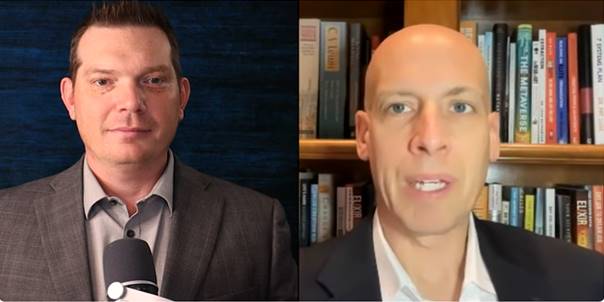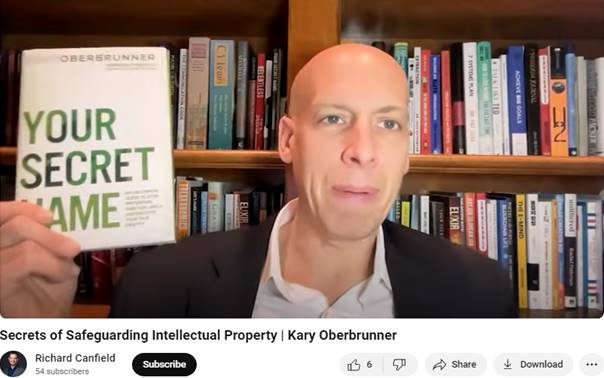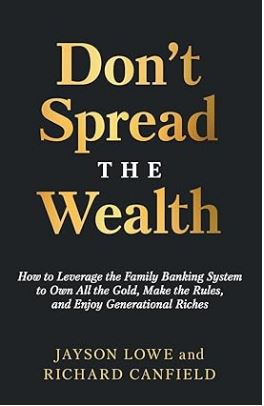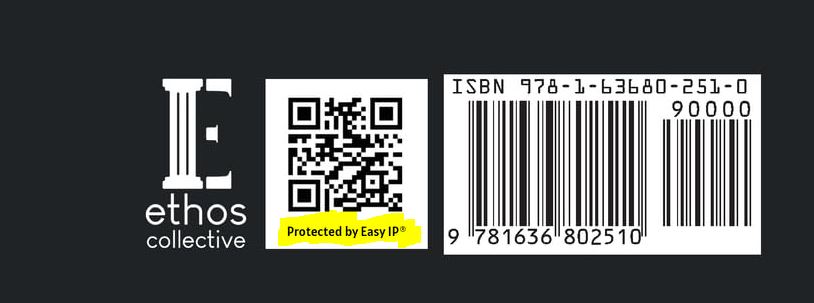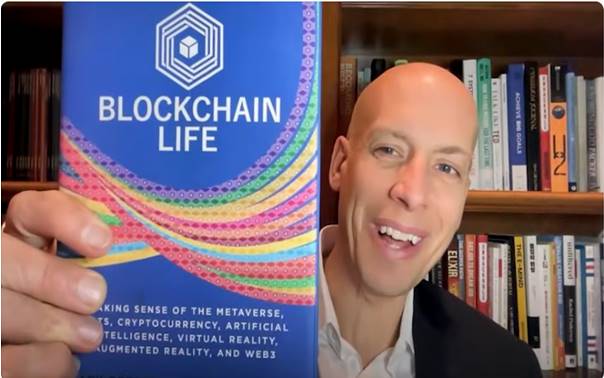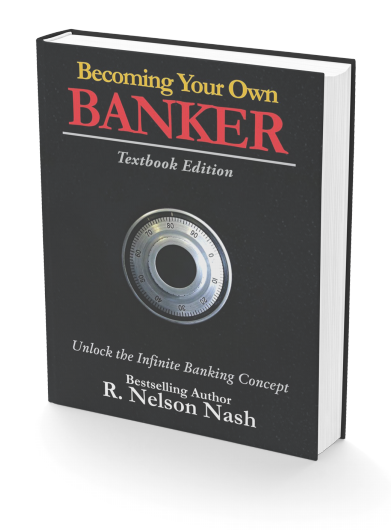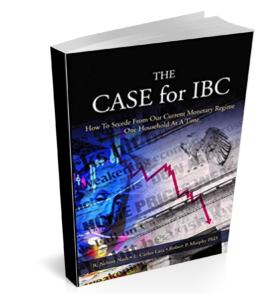I’m excited to host a good friend, Kary Oberbrunner, to discuss how entrepreneurs can easily and affordably protect their ideas and intellectual property.
Kary Oberbrunner is a Wall Street Journal and USA Today bestselling author of over a dozen books. He’s also the CEO of Igniting Souls and Blockchain Life.
Kary helped us to publish our book Don’t Spread the Wealth. He even tagged me on social media to share how our book is changing lives.
Before we proceed, I’d like Kary to share a bit about his entrepreneurial journey.
Kary opens up about his early struggles with depression and self-harm. “I suffered in silence,” he says, explaining how he felt when no one understood what he was going through.
His speech problems, he explains, weren’t due to a lack of words but because he felt that every word had to be perfect. His parents sent him to counseling, and when asked if he’d ever thought about suicide, he didn’t even know what it meant, so he lied.
Self-harm wasn’t for attention, Kary says, but a way to cope with his inner pain. There was no internet or community to turn to—he was alone in his struggle. But writing became his escape. “Journaling let me express everything I couldn’t say out loud,” he explains.
Inspired by his father, Kary pursued graduate school to become a pastor. However, during his counseling training, his advisors pushed him to confront his own issues. He says things worsened before they improved, but the writing kept him grounded.
When he wrote Your Secret Name, he knew he had to share his full story. “It was scary but freeing,” he says.
Reflecting on his journey, he shares, “The area of your deepest wound is often the area of your greatest contribution.”

One of my favorite quotes by Kary Oberbrunner “The area of your deepest wound is often the area of your greatest contribution.”
Kary believes entrepreneurs often create solutions to their own problems. His own struggles with fear and self-doubt allowed him to connect with others. Now, he helps people confront their issues, saying, “True change happens when we’re honest about what we’ve been through.”
I ask Kary what advice he’d give to someone afraid to open up. He says, “Fear is really pride—it stops us from connecting.” He adds that sharing his struggles, even publicly, showed him that vulnerability is a strength, not a weakness.
Kary’s words are inspiring, and I’m excited to collaborate with him on our project, Don’t Spread the Wealth, a book we’ve carefully refined together.
What’s The Importance of Intellectual Property?
Many people don’t realize they have intellectual property, but it’s often central to their business.
Kary recalls a workshop where he asked someone in animation about their IP. The person initially thought they didn’t have any, believing their clients, like Disney and Lego, owned it all. However, after a few questions, Kary helped them recognize that their unique seven-step client onboarding process was actually the IP.
Kary emphasizes that every business has IP, even if they don’t recognize it. “Even if you sharpen saws, the way you do it, the packages you offer, how you arrange your tools—all of that is IP,” Kary explains. “It sets you apart, and if you don’t protect it, others can copy it, and you may lose what makes you special.”
Kary shares the example of Chris Maxson, who makes fireplaces at AccuCraft Fires. Chris created a ‘baby touch glass’ that stays cool even when the fireplace is on. At first, he didn’t want to protect it, but Kary pointed out that a competitor could patent it and prevent him from using his own invention. This made Chris realize the value of protecting his IP.
The value of IP has grown significantly over time. In 1975, 83% of the S&P 500’s value came from physical assets like buildings and inventory. By 2020, 90% of that value was tied to IP and other intangible assets.
However, protecting IP isn’t easy. A patent can cost around $20,000, and the process can take up to three years.
Knowing and protecting your IP is essential for long-term success.
Kary learned this firsthand when a pastor started using his book Your Secret Name without permission. It made him realize how easily someone’s IP can be stolen.
Understanding the Power of Intellectual Property Protection
I respond to Kary, amazed by how a simple Google Alert triggered his realization about IP. “You have a Google Alert that warns you when something’s wrong, and it opened up a whole new understanding of how easy it is for others to take what you’ve created. You’d think, ‘This is my story, my journey, my book—why would anyone take it?’ But that’s exactly what happened.”
Kary explains how he politely messaged the pastor to ask if they could discuss using his book, Your Secret Name. He never received a response, but later, when he checked the pastor’s website, he noticed that all references to his book had been removed. Kary wasn’t trying to argue, but he thought it was important to keep his story to himself.
He shares how his experience with Strategic Coach and Dan Sullivan changed his perspective on IP. “At first, I didn’t take action. But being around Dan changed my view. He sees everything as IP. I realized I’m not just publishing books—I’m creating intellectual property. These books are ideas and systems.”
To drive the point home, Kary uses a simple analogy. Imagine two groups of first graders on a playground. One playground has a fence, and the other doesn’t. The kids in the unfenced playground stayed close to the teacher, too scared to play. But the kids in the fenced playground ran freely, enjoying every part.
The fence represents IP protection. You’re afraid to share your ideas without it because someone might take them. But with proper protection, you feel confident and willing to take risks.
Through my work with the Nelson Nash Institute as an Authorized Infinite Banking Practitioner, I understand the importance of intellectual property.
My mentor, R. Nelson Nash, created the Infinite Banking Concept®, and it is vital to ensure the aspect of his legacy continues even after his passing.
While trademarks and registrations are in place, truly safeguarding that legacy is something I’ve only come to understand more deeply in recent years.
Protecting Your Ideas: How to Use Easy IP Protection
I’ve heard of people publishing a book only for others to copy, print, and sell it on their own Amazon channel, keeping all the profits. It’s hard to believe, but it happens. This highlights how critical it is to have measures like Google Alerts to monitor what’s happening with your content.
I ask Kary, “You’ve seen these types of situations play out. So, while getting IP protection is one thing, how can someone ensure it’s being maintained and defended effectively? What steps can they take to really honor and safeguard it?”
Kary responds by saying protecting IP is about building a strong case. Think about companies like Disney. If someone hears their name, they can’t mess with their IP immediately. The same goes for organizations like EOS or Strategic Coach. People know they take their IP seriously, and there are real consequences if you break the terms.
On the flip side, there are companies with no IP protection at all—sometimes because they’ve stolen it from someone else. As a result, they hold no true value. When these companies try to sell or attract investment, they struggle. Investors see nothing unique, no protected value, and they walk away.
What exactly is Easy IP?
While working on our new book, Don’t Spread the Wealth, I saw something impressive in Kary’s platform. It not only protects our IP but also helps market the book. There’s even a section in the back of the book showing how it’s protected, which is powerful. This makes me wonder how many other authors could benefit from this service.
What about blockchain technology?
Patents are great. Our friend Egan Caldwell runs a leading IP law firm, and Kary respects what they do. However, getting a patent can take a long time and cost a lot. Kary and I come up with new ideas all the time. We’d go broke trying to patent every one of them!
Kary says that he learned about blockchain a few years ago. At first, he didn’t understand it, so he wrote a book called Blockchain Life and simplified it for everyone.
Blockchain is like a digital book that anyone can read, but no one can change. Once information is added, it can’t be erased or altered, which is why it is so powerful for protecting ideas.
With blockchain, we can create a digital stamp called a smart contract that proves when an idea was created. It’s fast and much cheaper than a patent.
That’s why Kary developed Easy IP(Now Instant IP). It lets people protect their ideas instantly, whereby they can keep them public or hide them until they need to show them.
If someone tries to steal or copy your idea, you can prove you had it first.
Kary adds that this approach even works in the EU, where it’s called ‘prior art.’ If someone tries to patent an idea you already protected, you can prove you had it first and block their claim. And it costs a fraction of what patents cost.
But it’s not just about fighting over rights. This system also allows people to work together. If someone wants to use your idea, you can team up to make something even better.
It’s like when Ray Kroc helped grow McDonald’s by teaming up with others. When people combine their strengths, they create something nobody else can match.
Real-Life Examples of Protecting Ideas with Easy IP
Kary shares a story about a woman at the Abundance 360 event who has developed a unique formula in the healthcare field. She dreams of getting it patented but needs to talk to investors first. The problem? Sharing new ideas can be risky, even with NDAs.
Easy IP allows her to prove she originated the concept and discuss it openly without fear of theft.
Another example Kary highlights is a young cross-country runner in the U.S. Most traditional gloves expose fingers to the cold, which isn’t ideal for runners. So, he invents “Glubz,” a new glove design that keeps hands warm.
As a college student, he didn’t have the $20,000 required for a patent. Instead, he uses Easy IP to protect his invention. Now, his gloves feature a QR code linked to the blockchain, proving ownership instantly.
Kary also mentions Emily, a songwriter who recently joined. When collaborating with bandmates, she used to worry about others taking her lyrics. Now, she uploads her lyrics to Easy IP for protection before sharing them. When she hands out sheets marked “protected by Easy IP,” it discourages misuse, letting her collaborate with peace of mind.
Key Takeaways
- Transforming Pain into Strength: Kary’s journey of overcoming depression, self-harm, and fear shows that facing and sharing your struggles can help you grow and also allow you to support others.
- Vulnerability as a Superpower: True strength lies in vulnerability. By sharing his experiences, Kary has connected with others and inspired change, showing that authenticity and courage draw people in.
- The Hidden Value of Intellectual Property: Every business has IP, even if it’s not obvious. Whether it’s processes, logos, or unique approaches, recognizing and protecting these elements is essential to staying competitive.
- Necessity of IP Protection: Kary emphasizes that failing to protect your IP can lead to others copying or even restricting your use of your own ideas. Secure your unique offerings to safeguard your business’s core value.
- Leveraging Easy IP: Easy IP utilizes blockchain technology to create immutable digital records, providing fast and affordable protection for ideas compared to traditional, lengthy patent processes.
- Collaboration through Protected Ideas: IP protection not only defends your rights but also creates opportunities for collaboration and innovation, as demonstrated by Kary’s experiences in team-building to leverage collective strengths.
Want to unlock your entrepreneurial potential?
Get my free guide on “Maximizing Success By Understanding How You Function.”

